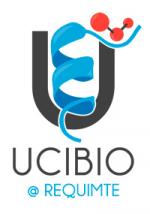Manganese(I) tricarbonyl complexes as potential anticancer agents
- Citation:
- Manganese(I) tricarbonyl complexes as potential anticancer agents, Lenis-Rojas, {Oscar A. }, Carvalho Beatriz, Cabral Rui, Silva Margarida, Friães Sofia, Roma-Rodrigues Catarina, Meireles {Marta S. H. }, Gomes {Clara S. B. }, Fernández {Jhonathan A. A. }, Vila {Sabela F. }, Rubiolo {Juan A. }, Sanchez Laura, Baptista {Pedro V. }, Fernandes {Alexandra R. }, and Royo Beatriz , JBIC Journal of Biological Inorganic Chemistry, feb, Volume 27, Number 1, p.49–64, (2022)
Abstract:
The antiproliferative activity of [Mn(CO)3(N^N)Br] (N^N = phendione 1, bipy 3) and of the two newly synthesized Mn complexes [Mn(CO)3(acridine)(phendione)]OTf (2) and [Mn(CO)3(di-triazole)Br] (4) has been evaluated by MTS against three tumor cell lines A2780 (ovarian carcinoma), HCT116 (colorectal carcinoma), HCT116doxR (colorectal carcinoma resistant to doxorubicin), and in human dermal fibroblasts. The antiproliferative assay showed a dose-dependent effect higher in complex 1 and 2 with a selectivity toward ovarian carcinoma cell line 21 times higher than in human fibroblasts. Exposure of A2780 cells to IC50 concentrations of complex 1 and 2 led to an increase of reactive oxygen species that led to the activation of cell death mechanisms, namely via intrinsic apoptosis for 2 and autophagy and extrinsic apoptosis for 1. Both complexes do not target DNA or interfere with cell cycle progression but are able to potentiate cell migration and neovascularization (for 2) an indicative that their application might be directed for initial tumor stages to avoid tumor invasion and metastization and opening a new avenue for complex 2 application in regenerative medicine. Interestingly, both complexes do not show toxicity in both in vivo models (CAM and zebrafish). Graphical abstract: [Figure not available: see fulltext.]
Notes:
Funding Information: info:eu-repo/grantAgreement/FCT/3599-PPCDT/125363/PT# This work was funded by national funds through FCT–Funda{\c c}ão para a Ciência e a Tecnologia, I.P., Project MOSTMICRO-ITQB with refs UIDB/04612/2020 and UIDP/04612/2020. The NMR spectrometers at CERMAX are integrated in the National NMR, Network (PTNMR) and are partially supported by Infrastructure Project No. 022161 (co-financed by FEDER through COMPETE 2020, POCI and PORL and FCT through PIDDAC). This work is financed by national funds from FCT—Funda{\c c}ão para a Ciência e a Tecnologia, I.P., in the scope of the project UIDP/04378/2020 and UIDB/04378/2020 of the Research Unit on Applied Molecular Biosciences—UCIBIO and the project LA/P/0140/2020 of the Associate Laboratory Institute for Health and Bioeconomy—i4HB. Oscar A. Lenis-Rojas acknowledges Project LISBOA-01-0145-FEDER-007660 (Microbiologia Molecular, Estrutural e Celular) funded by FEDER funds through COMPETE2020-Programa Operacional Competitividade e Internacionaliza{\c c}ão (POCI) and by national funds through FCT, POPH-Programa Operacional Potencial Humano, and FSE (European Social Fund) for the CEEC 2017 Initiative. Jhonathan A.A Fernández acknowledges Coordena{\c c}ão de Aperfei{\c c}oamento de Pessoal de Nível Superior—Brasil (CAPES) and the program CAPES/PRINT Proc. 88887.470075/2019-00 for the financial support. Sabela F Vila, Juan A. Rubiolo, and Laura Sanchez acknowledge ACUIGEN (GI-1251) from the Universidad de Santiago de Compostela and Xunta de Galicia proyect ED431C 2018/28 for the financial support. Clara S. B. Gomes acknowledges the Associate Laboratory for Green Chemistry–LAQV and the Applied Molecular Biosciences Unit–UCIBIO. LAQV is financed by national funds from Funda{\c c}ão para a Ciência e a Tecnologia (UIDB/50006/2020, UIDP/50006/2020). The authors acknowledge M. Baleia and I. Goncalves for pDNA, gDNA, and preliminary BAX/BCL-2 data, respectively.

